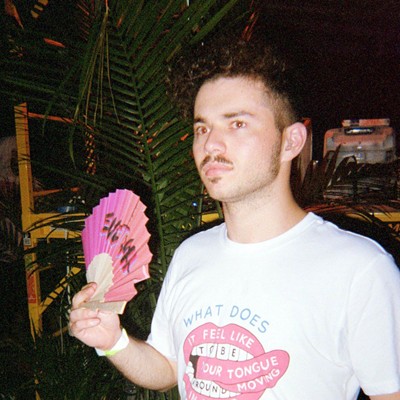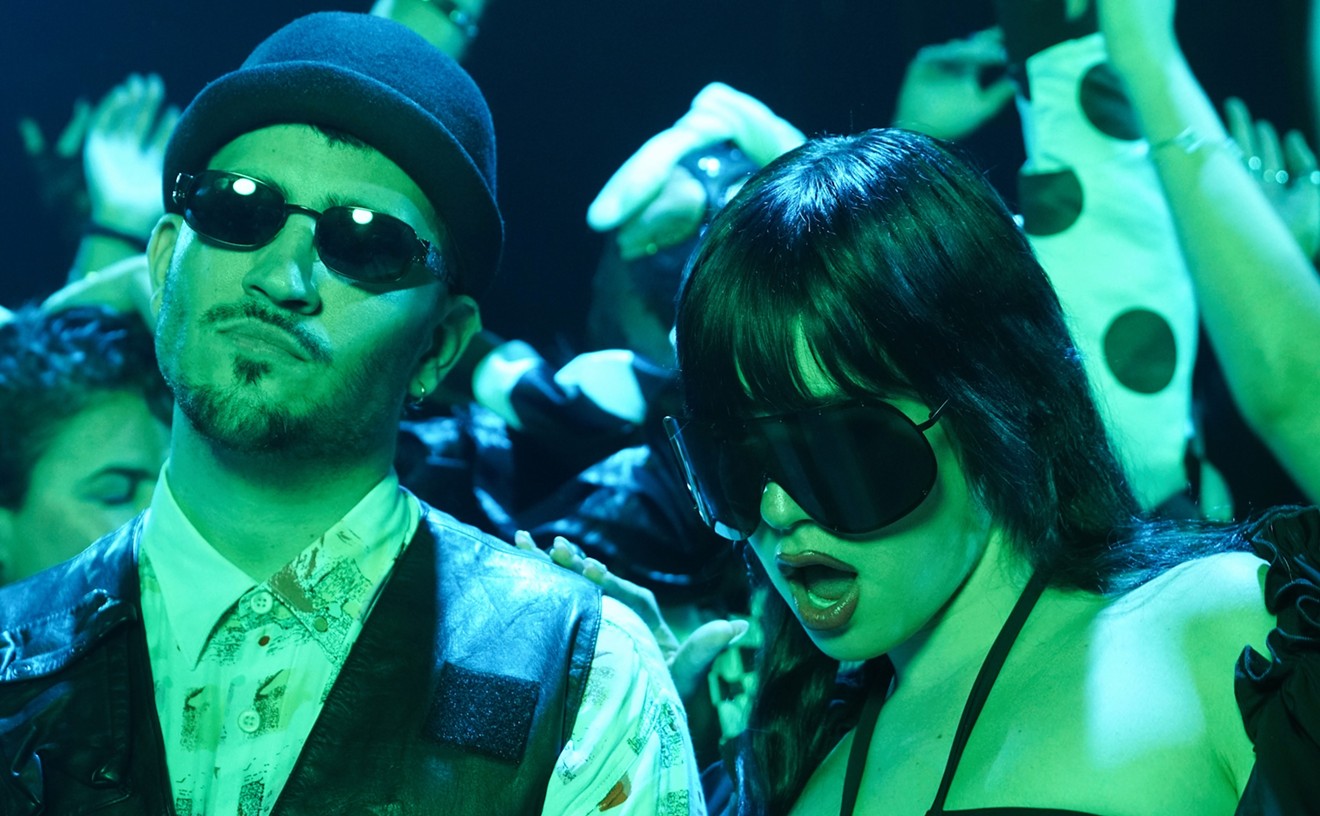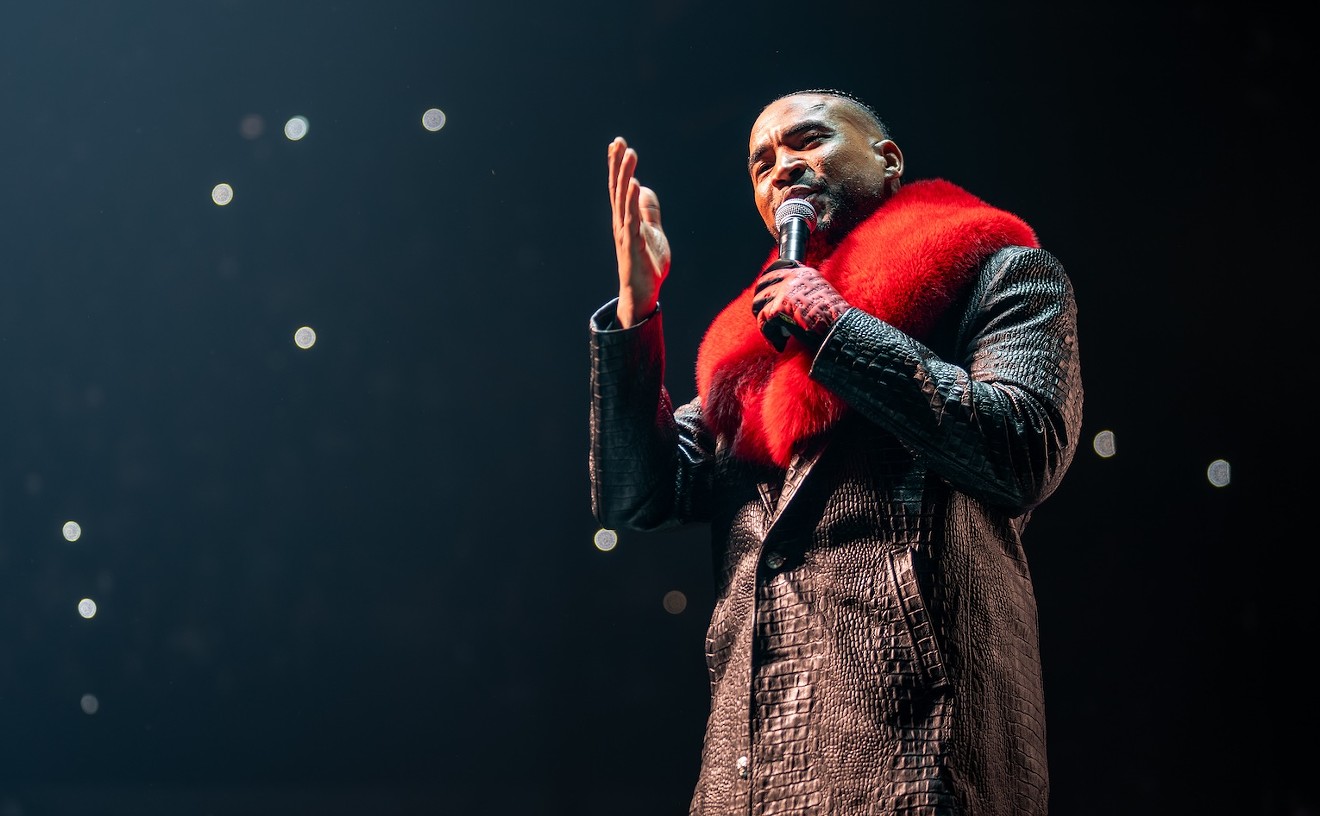But far from being comforting, the choppers only magnify the dystopian nightmare unfolding. Rather than the smooth exit promised by festival organizers, departing Virginia Key feels more like a gauntlet. For the masses, there are two options to escape the island: wait for hours as people push and shove to secure a spot aboard one of the festival shuttles — all while trying not to hit one's face or get one's foot run over by the arriving buses — or make the three-plus-mile trek across the Rickenbacker Causeway on foot. As thousands opt for the latter, the lanes of the causeway quickly become commandeered by the horde, which somehow avoids getting struck by cars zooming past. Not long after Marshmello’s “Happier” has wrapped up, the booming voice of Ultra announcer Damian Pinto echoes across the island: “Make some noise, Miami!” Several walkers begin to scream.
Although it might sound like a sequence from a George Romero film, the scene at Ultra 2019 not only was very real but also perfectly captured the depressing intersection of class, entertainment, and politics at the close of the 2010s.
As tempting as it is to blame the sad state of Ultra on its organizers, let’s not forget the City of Miami, whose mismanagement of the simultaneous growth of the festival and downtown led to Ultra's ouster from its longtime Bayfront Park home last year. Despite the international recognition and revenue Ultra brings Miami, the whims of bourgeois downtown residents — many of whom reside here seasonally and moved to the area only in recent years — were deemed more important than the legacy of one of the city’s premier cultural institutions. For all their hemming and hawing about the safety risks Ultra posed, city officials seemingly had no problem placing attendees in further danger by forcing the festival out of downtown. Far from the relative ease of leaving Bayfront Park to catch an Uber, taxi, or Metromover ride home in 20 minutes, departing Virginia Key proved to be an arduous, hours-long endeavor.
Given the scenes of people running in the streets and the potential for dehydration and exhaustion, it’s a miracle no serious injuries were reported. Although Friday’s transportation problems were well publicized and several reports noted an improvement Saturday and Sunday, not everyone was appeased. Attendees' complaints of disorganization were shared by the talent too: One artist told New Times that festival staff frequently gave contradictory information about VIP transportation. A shuttle driver shared that even with the supposed improvements to the traffic plan, it still took an hour and a half to reach Virginia Key from the festival’s Adrienne Arsht Center bus station Sunday night. The ride was supposed to take about 19 minutes, according to Ultra's website.
With the amount of money at stake, it’s understandable why the festival forged ahead this year despite the warning signs advising otherwise. But in light of the reception Ultra's 21st edition received, perhaps organizers should've taken a year off to figure out how to throw a non-Bayfront Park event properly: As if the transportation problems and palm tree fires weren’t enough, the festival has also taken heat for its layout, technical gaffes, and shameless corporate stunts.
Billboard reported Tuesday that Ultra has every intention of returning to Virginia Key next year. The fact that festival organizers also thought it a good idea to give Colonel Sanders a slot makes their judgment seem more than a bit questionable. Ultra once led the way in dance music gatherings; even as it expanded as part of the EDM boom it helped produce, the event still brought in electronic luminaries such as Kraftwerk and New Order, as well as left-of-center artists such as 2manydjs, Caribou, and Metronomy. Regardless of whether the festival returns to Virginia Key, the chaos of this year’s outing ought to prompt some reflection about what Ultra wants to be in its 22nd year and beyond: Is it the embarrassment that books fast-food mascots and gets dubbed "Fyre Festival 2," or the vanguard that sets an example for other electronic events?
Perhaps this is how Ultra’s cultural relevance ends: not with a bang, but with a cheaply produced paean to 11 secret herbs and spices. Let's hope the 2019 edition is an egregious outlier instead of a harbinger.













